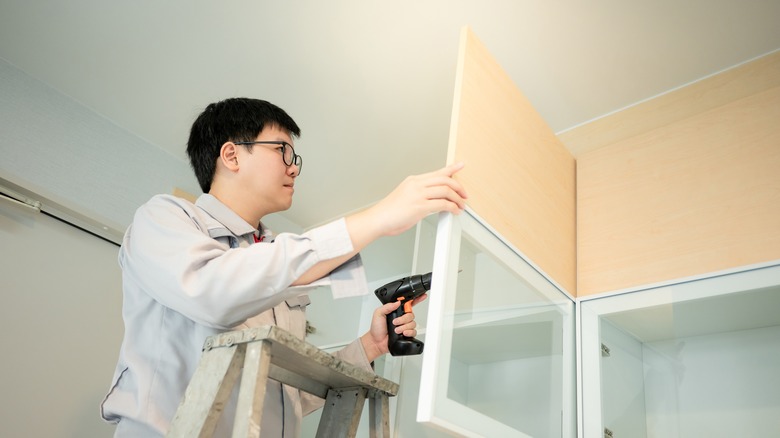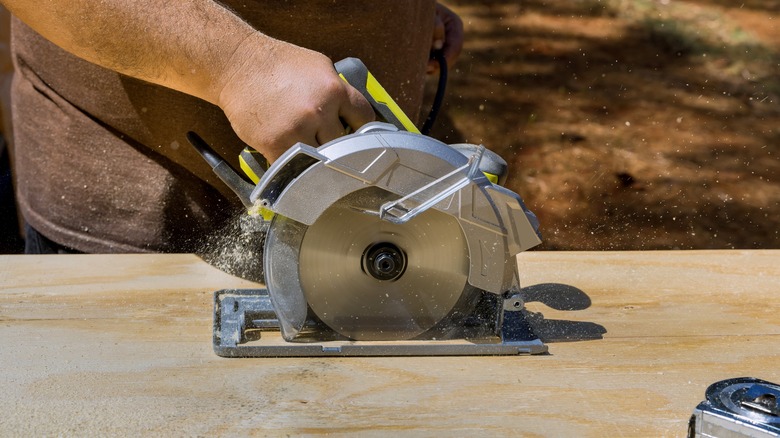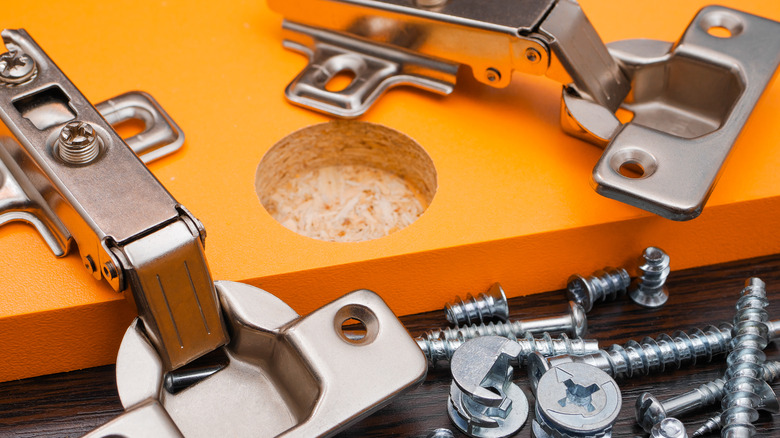How To Build Your Own Cabinet Doors (& Why You Shouldn't Be Scared Of Doing It)
Making cabinet doors may seem well outside the realm of safe, easy DIY tasks. The process involves careful measuring, math, and precision. If you don't measure the doors correctly, they won't line up with your cabinets' opening. You also have to mount the hardware yourself so the doors can open and close. But don't let your fear of the process above stand in the way of upgrading your cabinets with brand-new homemade doors. If you choose the right door style, can do basic math, and have at least a table saw at home, you can build your own cabinet doors in no time. After all, they are essentially rectangles, and that simple form is easy enough to create in the shop.
Notice how we mentioned the importance of choosing the right door style. There are two common cabinet door styles — shaker and slab. Shaker doors comprise four stiles that enclose the panel in the middle around its perimeter. These stiles may give the door a classic look, but making them yourself, then gluing them to the panel adds time and effort. Another downside of shaker style cabinets is that dust collects around the stiles, which just creates another space to have to clean. On the other hand, you have slab cabinet doors, which are made of a single panel with no trim around it. They look minimalist and contemporary, take seconds to clean, and require minimal effort to build on your own. We'll talk you through how to build them.
How to build slab-style cabinet doors
First, decide on the materials you'll use for your cabinet doors. If you plan to paint the doors, opt for MDF — it's cheaper than wood and doesn't shrink or warp when you paint it. You don't need to sand it, either. Conversely, choose plywood panels with a nice grain, like oak or maple, if you're staining the doors. If you're going with plywood, you'll need to band the doors' edges, so buy some edge banding while you're at the hardware store.
Once you bought the plywood panels, determine the door sizes. Don't worry, this is simpler than you think. Just measure the height and width of the cabinet opening, including the top, bottom, and side walls. Then, since the doors should have a tiny gap between them, subtract 3/32 of an inch from the total width. Then multiply the thickness of banding by four, since it will add to the overall door width on both sides of the two doors. Subtract the banding from the total width. Then divide the total width by two (since you have two doors) to get your final measurements.
Use those measurements to cut the cabinet door panels. Then, place them against the cabinet to see how well the doors line up against the horizontal components. Also, this is a good time to check if the gap you made is sufficiently wide. If the doors need any trimming, now's the time to do it.
How to finish the cabinet doors after building them
Before you hang the newly cut cabinet doors, you'll need to attach hinges, then finish them. If working with plywood, don't forget to finish the edges with banding. To do this, cut the edge banding into pieces that slightly exceed the door dimensions — it's much easier than holding the entire roll while ironing a piece on. Then, starting with the top and bottom, iron the banding on and trim off the excess. Repeat the same process for the sides.
Next, you need to create holes on the inside of the cabinet doors to accommodate hinges. There are several different types of cabinet hinges, and you'll have to cut out a hole pattern that suits the hinge type. When situating the hinges, make sure there is sufficient clearance between them and the cabinet box or any shelves inside the cabinet. You can use a drill with a properly sized hinge hole bit for this task.
However, before you fasten the hinges and handles, apply your chosen finish to the doors. If you're working with MDF, you can prime and paint them right away. If you have plywood, you'll need to sand it first. An orbital sander will help you get the job done quickly on the panels' surface, but you'll need a sanding block to work the edges. Next, you can paint or stain the doors as needed. Check out this pool noodle hack to make spray painting cabinet doors a breeze!


